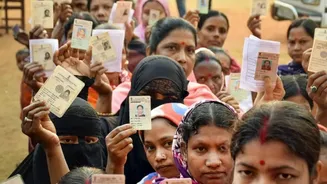Following a recent ruling by the Delhi High Court, open prisons across India have once again come under public scrutiny. The court has instructed the Director General (Prisons) to draft and implement,
within eight weeks, a Standard Operating Procedure (SOP) for the use of mobile phones by inmates in open prisons. Justice Sanjeev Narula stated that the SOP should either permit inmates to possess mobile phones in accordance with prison regulations or establish a secure mechanism for depositing them upon entry and reclaiming them upon exit.
This directive came in response to a petition filed by a life convict, who had contested his 2020 sentence and subsequent transfer from an open prison to a closed one. During an inspection, the inmate had been found with a mobile phone, two SIM cards, and two chargers. As a result, his privileges were revoked, and he was relocated to a more restrictive facility.
Who Is Housed In An Open Prison?
Open prisons typically accommodate low-risk inmates or those who have displayed consistent good behaviour. These inmates are granted greater freedom to move beyond prison walls and are often involved in work or educational programmes designed to prepare them for reintegration into society.
In West Bengal, a committee comprising prison and police officials interviews and reviews the records of eligible prisoners before approving their transfer. Similarly, in Rajasthan, prisoners must complete at least one-third of their sentence to qualify for an open prison transfer.
What Are Open Prisons Like?
Unlike conventional prisons, open prisons prioritise rehabilitation over confinement. Their security protocols are far less stringent, reflecting trust in the inmates’ conduct. Reports suggest that in several states, inmates are even permitted to live with their families and earn their own livelihoods.
In West Bengal’s open prisons, for instance, prisoners enjoy unrestricted movement throughout the day as there is no daily lock-up system. This level of liberty is not universal but is seen in states such as Rajasthan and West Bengal, which are known for progressive open prison models.
Prisoners Can Go Wherever They Want
The gates of open prisons typically open at 6 am and close at 8 pm. During these hours, inmates are free to go wherever they wish but must return by the stipulated time. Prisoners are advised to find employment within a 20-kilometre radius of the facility to ensure daily return. They are also granted 20 days of parole every six months, though the exact terms may differ by state.
Upon transfer, inmates are initially provided food by the prison for three months, after which they must arrange their own meals, a measure aimed at fostering independence and responsibility.
Key Features Of Open Prisons
- Freedom with Responsibility: Inmates may leave the premises for work, education, or family visits, helping them adjust to normal life.
- Employment Opportunities: Many inmates work in nearby industries, farms, shops, or institutions to develop skills for post-release life.
- Family Contact: Inmates often enjoy longer and more frequent family visits, promoting emotional stability.
- Rehabilitation Focus: Open prisons aim to reform, not punish, by providing a supportive and structured environment.
- Eligibility Criteria: Only prisoners with good conduct, low-risk profiles, and potential for rehabilitation are considered.
- Security Measures: Though relaxed, systems like surveillance and regular inspections ensure order and discipline.
History Of Open Prisons In India
The concept of open prisons in India dates back to 1905, when the first such facility was established under the Bombay Presidency. However, it was discontinued in 1910. The first open prison for women was inaugurated in Yerwada, Pune, Maharashtra, in 2010, while South India’s first open prison began operations in Poojapura, Kerala, in 2012.
The modern open prison system took root with the establishment of the Sitarganj Open Prison in Uttarakhand (1953), marking a major milestone in India’s shift towards rehabilitative justice.
In Delhi, open and semi-open prisons function primarily within the Tihar Jail complex. Haryana also operates similar facilities, for instance, in Ambala, where prisoners engage in agricultural work. However, Rajasthan stands out as the leading state, boasting around 29 open prisons out of more than 60 across India.
















